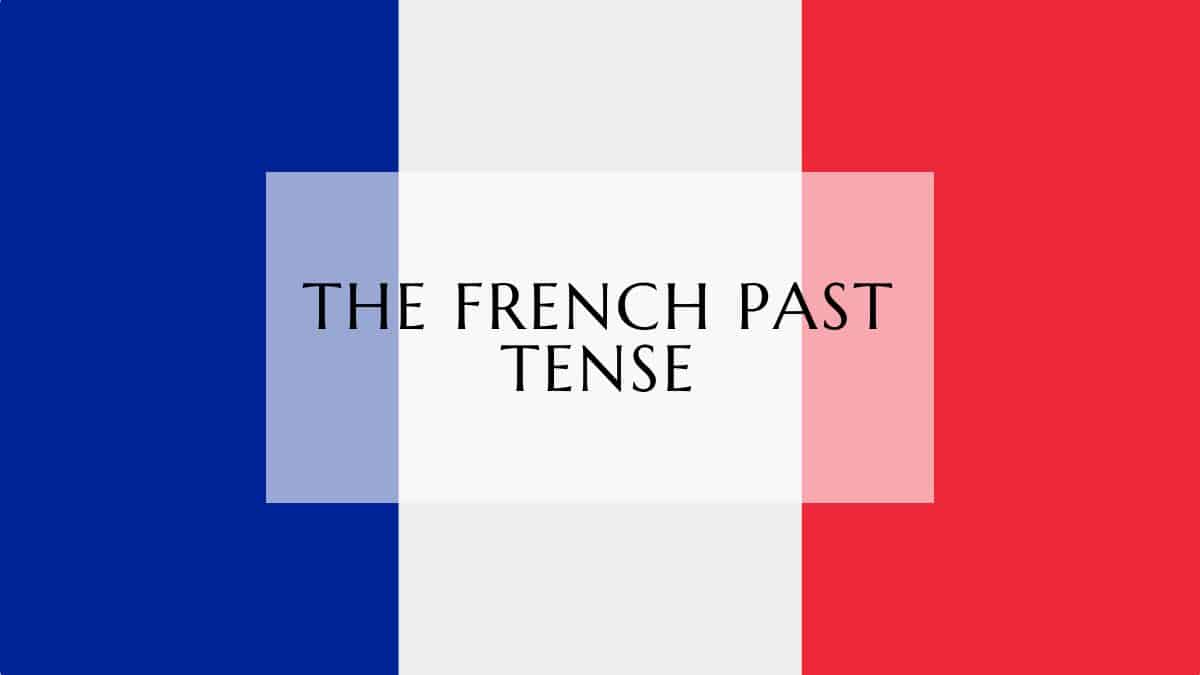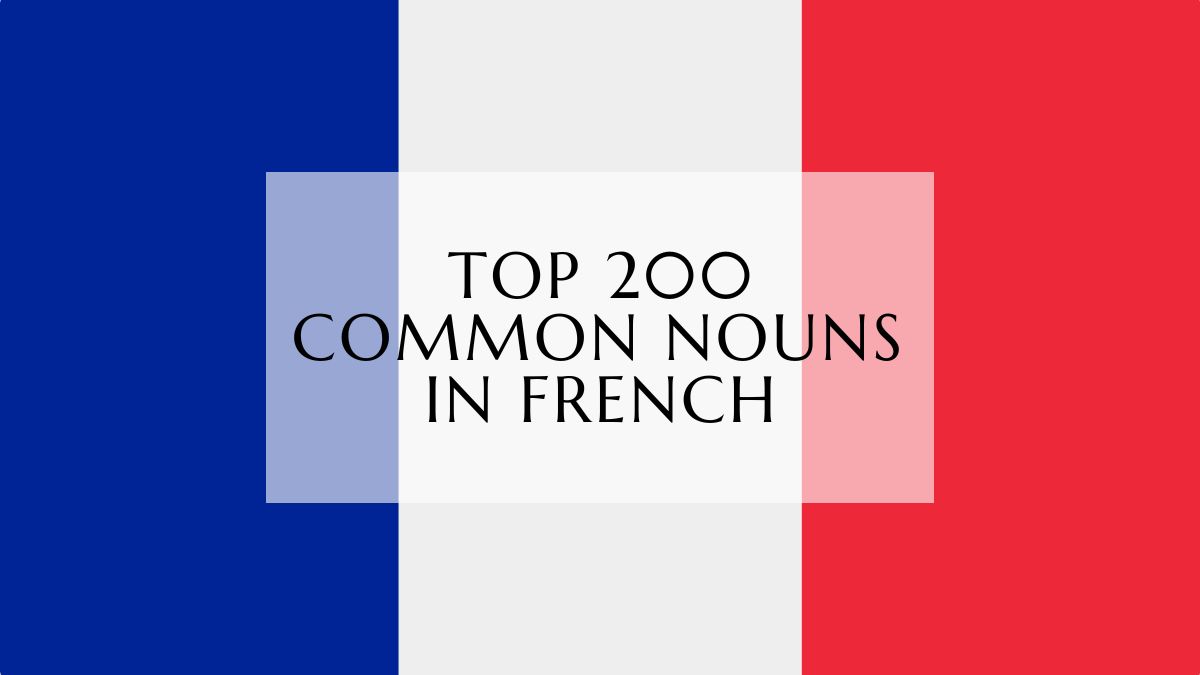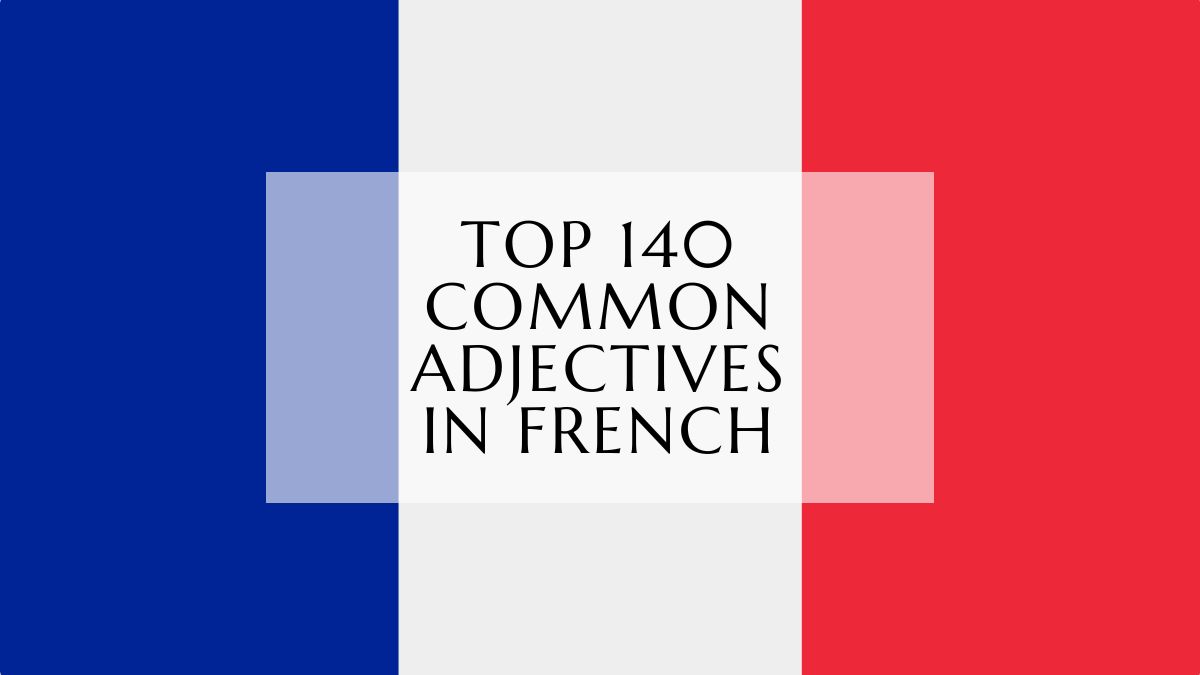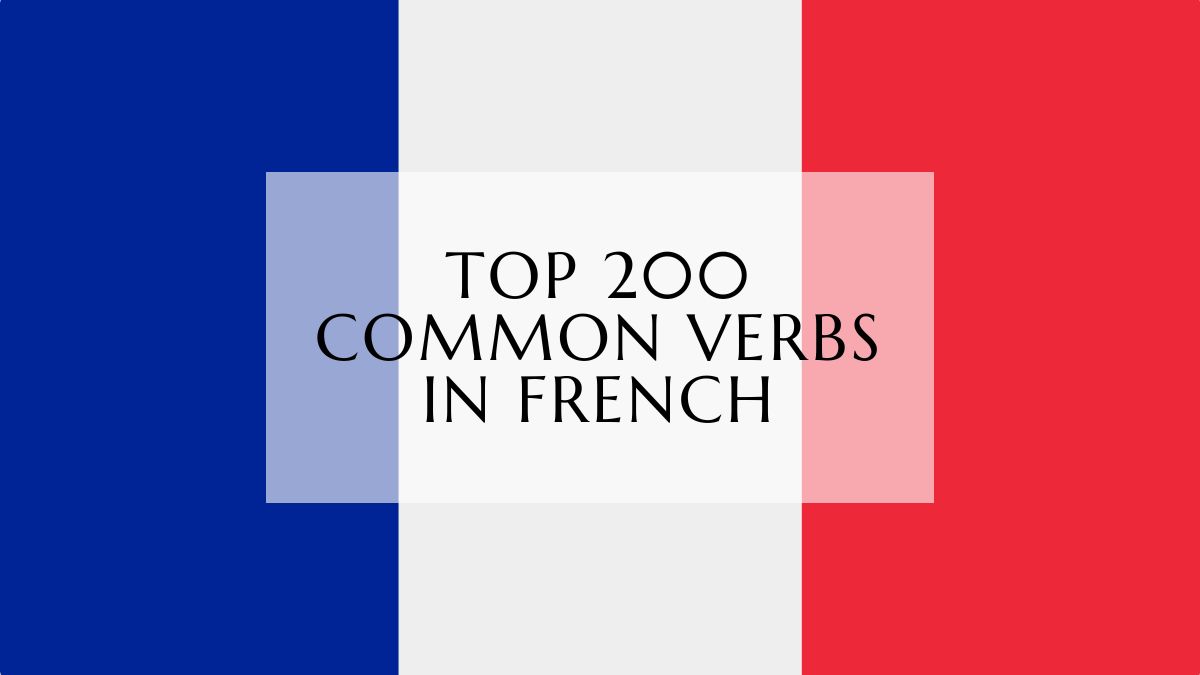The French past tense (le passé composé) is used to express an action that was completed in the past, and it’s also used to express something that was true in the past. in this lesson we will talk about the form of the French Passé composé, the auxiliary verbs and where to use them, let’s get started.

French Past Tense
The French Past Tense Form
Let’s look at the following sentence in both French and English:
| I have visited Nador | J‘ai visité Nador |
“ai” is the conjugation of the verb “avoir” in the present tense (first person singular je) and “visité” is the past participle of the verb “visiter“, and Nador? it’s where I live lol
When beginning with an example that put the “rule” into action and also use familiar words (to visit= visiter), thing get easier, your mission now is to absorb the rule through an example, you already got the formula of the passé composé, but here it is again: the auxiliary verb in the present tense + the past participle
I said “auxiliary verb” because there are two: être and avoir, the good news? in most cases we use avoir, later in this post, we will learn where to use être.
Now look at the conjugation of manger (to eat):
| J’ai mangé |
| Tu as mangé |
| il / elle / on a mangé |
| nous avons mangé |
| vous avez mangé |
| ils / elles ont mangé |
The second piece of the puzzle is the past participle, how do we form it?
The Past Participle
To form the regular past participles for verbs ending with –er, we replace the er with é (visiter – visité, manger – mangé). For verbs ending in –ir, we remove the r (finir – fini, choisir – choisi), and for verbs ending with –re, we replace re with u (répondre – répondu, entendre – entendu)
Some verbs don’t follow the regular pattern so they have irregular past participle, here are some:
| Infinitive | Past Participle |
| avoir (to have) | eu |
| être (to be) | été |
| faire( to do/ make) | fait |
| dire (to say) | dit |
| boire (to drink) | bu |
| voir (to see) | vu |
| lire (to read) | lu |
| prendre (to take) | pris |
Note: you can practice what you’ve learned here, and learn how to pronounce each of the words in our Memrise course here, don’t know how to use the platform or sign up? we’ve got you covered in this easy-to-follow tutorial here.
Le Passé Composé Avec “être”
As we said earlier, most verbs use the passé composé with “avoir” there are a few main verbs that use “être” and some others that are derived from them, these verbs are generally used to refer to a movement or a change of place/condition, the good news again? they are commonly used so you’ll get familiar with them + here are some:
| Infinitive | Past Participle |
| monter (to go up) | monté |
| venir (to come) | venu |
| aller (to go) | allé |
| naître (to be born) | né |
| descendre (to go down) | descendu |
| entrer (to go in/ to enter) | entré |
| retorner (to return) | retourné |
| tomber (to fall) | tombé |
| rester (to stay) | resté |
| arriver (to arrive) | arrivé |
| mourir (to die) | mort |
| partir (to leave) | parti |
| sortir (to go out) | sorti |
Note: when we use the passé composé with être, we have to match the endings of the past participle with the subject, for masculine we keep the same endings, for feminine we add e and es for feminine plural:
| il est sorti |
| elle est sortie |
| ils sont sorti |
| elles sont sorti |
French Passé Composé Review
Short Answer Questions:
- What two components are required to form the passé composé in French?
- How do you form the past participle for regular verbs ending in -er, -ir, and -re? Provide an example for each.
- What auxiliary verb is used in the passé composé for most verbs?
- Provide three examples of verbs conjugated with “être” in the passé composé, along with their past participles.
- Explain the rule for gender and number agreement when using “être” with the passé composé. Give an example.
- What types of verbs are commonly conjugated with “être” in the passé composé?
- Translate the following sentence into French: “Yesterday, I ate pizza.”
- What is the past participle of the verb “prendre”?
- How is the passé composé different from the imparfait?
- Provide an example of an irregular past participle in French.
Answer Key:
- The passé composé is formed with an auxiliary verb in the present tense + the past participle of the main verb.
- -er: Replace -er with -é (e.g., parler → parlé) -ir: Remove -r (e.g., finir → fini) -re: Replace -re with -u (e.g., entendre → entendu)
- The auxiliary verb used in the passé composé for most verbs is “avoir.”
- aller (to go) → allé venir (to come) → venu naître (to be born) → né
- When using “être” with the passé composé, the past participle must agree in gender and number with the subject. Example:Masculine singular: Il est allé (He went).
- Feminine singular: Elle est allée (She went).
- Masculine plural: Ils sont allés (They went – masculine).
- Feminine plural: Elles sont allées (They went – feminine).
- Verbs commonly conjugated with “être” in the passé composé often describe movement or a change in place/condition. These are often reflexive verbs as well.
- “Yesterday, I ate pizza” translates to “Hier, j’ai mangé de la pizza.”
- The past participle of the verb “prendre” is “pris”.
- The passé composé is used for completed actions in the past, while the imparfait is used for descriptions in the past, habitual actions, or actions in progress.
- An example of an irregular past participle in French is “vu” (from the verb “voir”).
Glossary of Key Terms:
- Passé Composé: The most common past tense in French, used to express completed actions or past states.
- Auxiliary Verb: A “helping” verb used to form tenses, such as “avoir” and “être” in the passé composé.
- Past Participle: The form of the verb used with an auxiliary verb to create compound tenses (e.g., parlé, fini, entendu).
- Infinitive: The base form of a verb, usually preceded by “to” in English (e.g., to speak, to finish, to hear).
- Agreement: The grammatical rule that requires certain words (like adjectives and past participles) to match the gender and number of the nouns or pronouns they modify.
- Imparfait: Another past tense in French, used to describe past situations, habitual actions, or actions in progress.
Get a pdf file of this lesson and other 1000 essential French words now, write your email so we can send it to you:
Happy learning
Oualid Cheddadi is the founder of Lingualid, a platform that inspires independent language learners worldwide, regardless of the language they are learning. The name “Lingualid” is derived from the Portuguese word for “language,” “língua,” and the last three letters of Oualid’s name, “Lid.”



